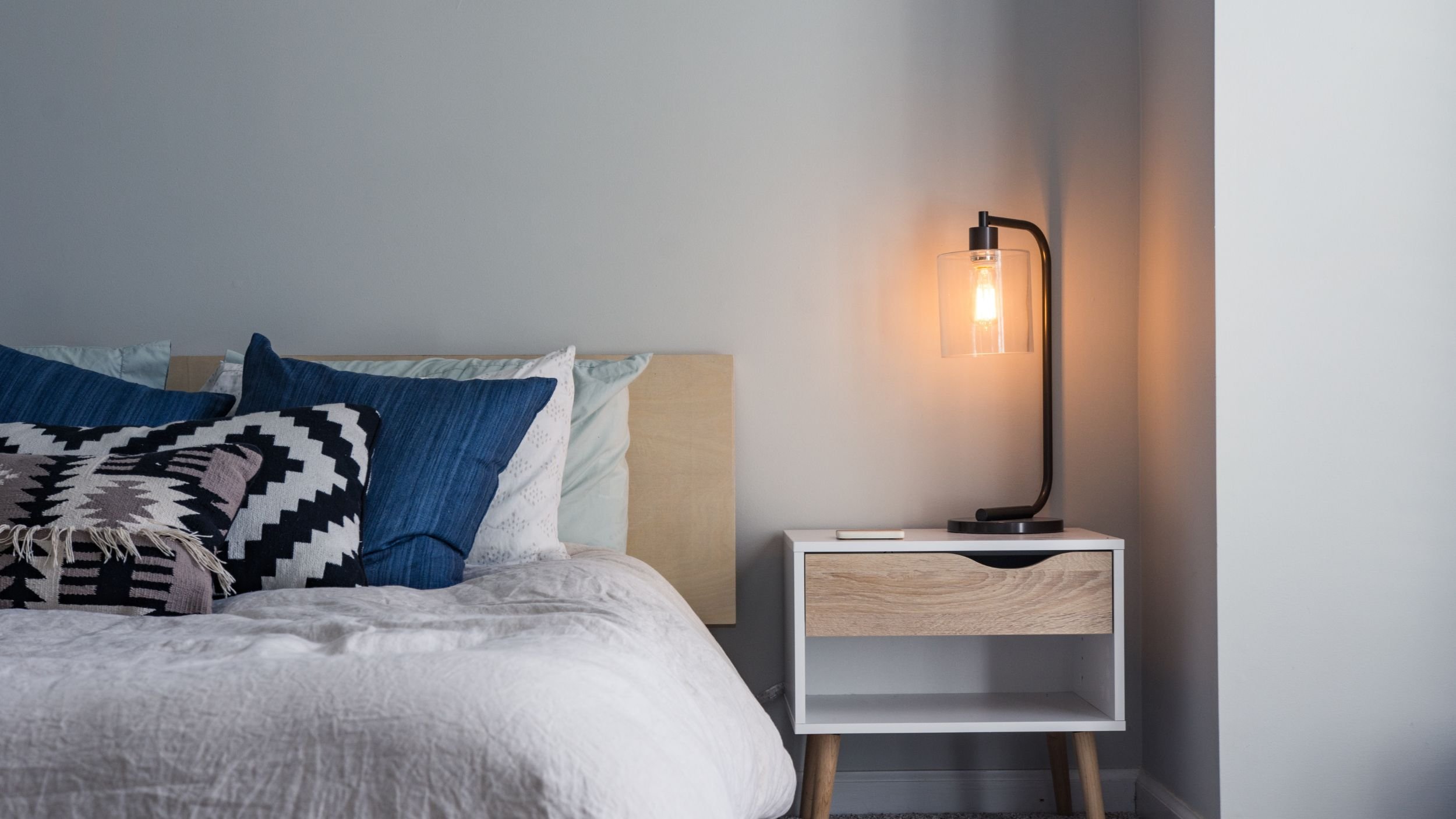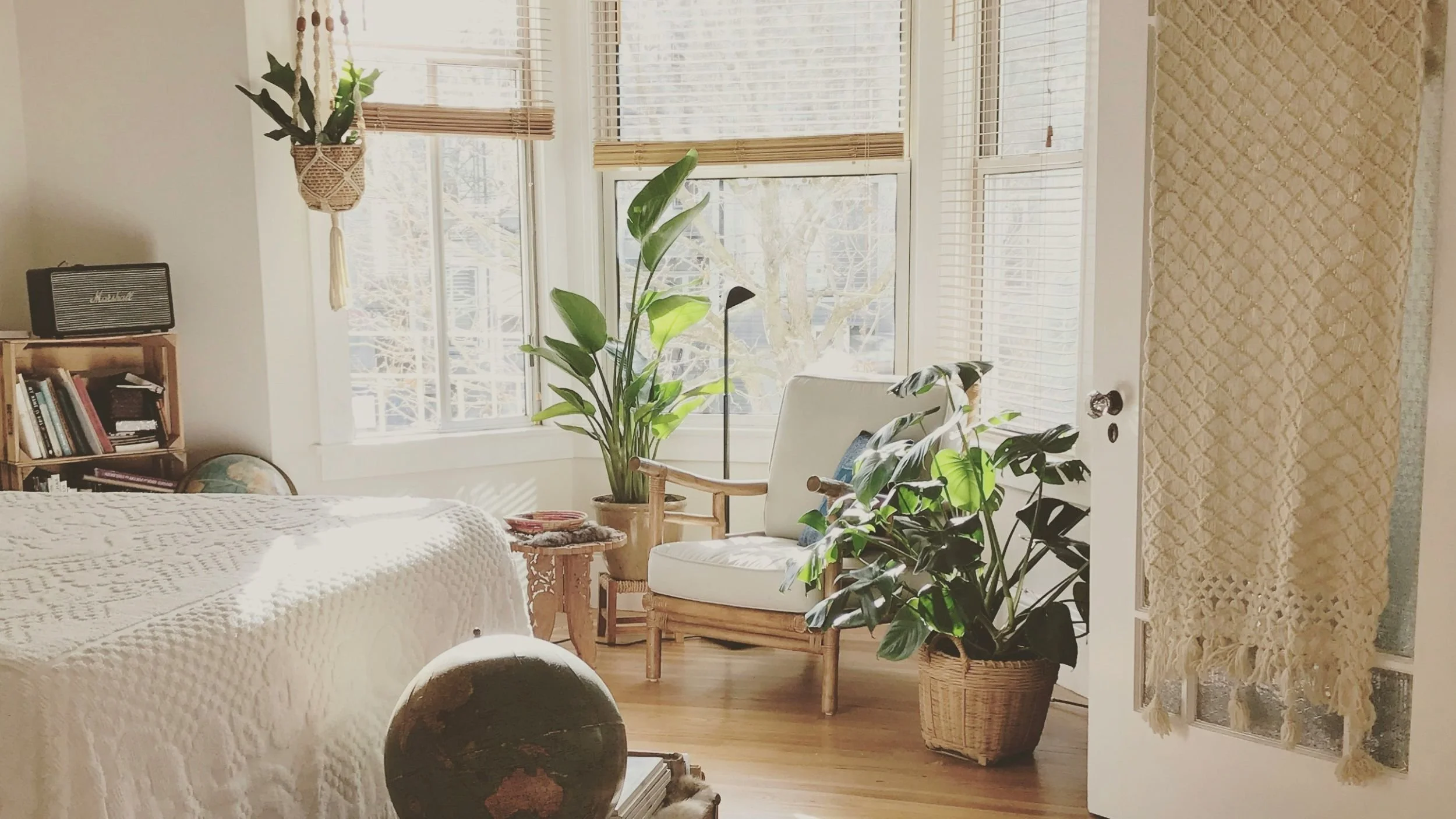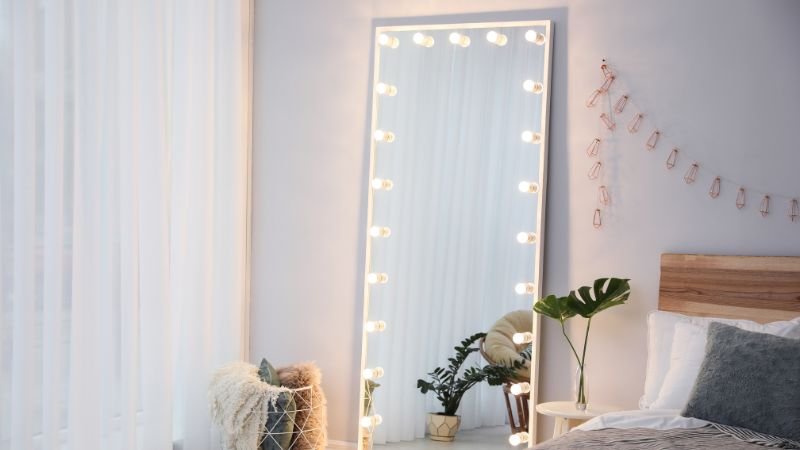How to Choose Bedroom Lighting: Creating The Perfect Sanctuary
Bedrooms are supposed to be a place of rest, but we also use these spaces to get ready, pack for holidays away, and do sudoku before bed. All of these jobs need different types of lighting to prevent irritation.
Bedroom lighting also needs to be inviting, as the wrong lighting can make a space seem stark and lifeless. Good bedroom lighting doesn’t just improve your bedroom’s aesthetic appeal, it plays an important part in comfort and functionality.
If you’re wondering how to choose bedroom lighting, there are some factors to remember to help you create the perfect sanctuary.
1. What Is The Best Lighting For A Bedroom?
The first thing to consider is what is the best lighting for a bedroom.
Essentially, bedrooms look best with three main light sources: task, ambient, and decorative lighting. Adding all three light sources can help create a well-lit, yet inviting bedroom space.
For instance, in the case of task lighting, think about where you read, work, or get ready in your bedroom. If you read in bed, a focused table lamp on your nightstand allows you to read and turn it off when you’re done, instead of having to get out of bed to turn off the light.
Decorative lighting involves choosing light pieces to accessorise your bedroom, which is a great way to give your space some personality. This depends on your preferred decor style. Some might prefer Art Deco wall sconces, while others prefer modern sculptural chandeliers.
Ambient lighting is also known as general lighting, which is typically the main source of light in a space. Ambient lighting can help you make the most of your bedroom’s comfort, depending on its tone and intensity.
Which brings us nicely to…
2. Consider Temperature
Following on from the last point, bright white lights are great for finding lost items and focusing on tasks, but they can make spaces feel sterile.
The blue light in cool light has faster wavelengths, which can improve alertness and performance. This might be great in an office, but this is the last thing that you want in your bedroom, as the space is meant to be relaxing. Blue light can also block melatonin, the substance which helps trigger sleep, which makes it harder to fall asleep at night.
If you’re wondering how to light up your bedroom, warm light is best, as it gives spaces a softer feel. When you look for warm white light bulbs, check that the LED colour temperature is between 2700K and 3000K (Kelvins). Bulbs with a higher colour temperature will produce more blue light, which is what we want to avoid.
However, if you prefer brighter lights, look for soft white bulbs instead of warm bulbs. Soft white light is around 2700K. This pale yellow brilliance is ideal if you work or carry out desk tasks in your bedroom, as these illuminate your space without feeling too harsh.
If you’re wondering how to light up your bedroom, warm light is best, as it gives spaces a softer feel.
3. Consider Your Bedroom Size
Lighting that works well in a large bedroom may have the opposite effect in a smaller bedroom, and vice versa.
For small bedrooms, particularly ones with low ceilings, avoid large, low-hanging fixtures. Giant chandeliers or long pendant lights can make a room feel cramped. Flush or semi-flush ceiling lights are better ideas for a small bedroom, as these provide enough illumination without taking up much visual space. This helps the ceiling appear higher and opens up the room.
In contrast, larger bedrooms offer more flexibility and can accommodate a variety of lighting options. Here, you have space to experiment with more dramatic fixtures, like statement chandeliers, which can serve as a focal point that adds character to a room.
In a smaller space, consider using wall-mounted lights or sconces to free up bedside table space. Floor lamps with upward-facing lights can make a ceiling feel taller, but choose sizes which fit the room’s scale to prevent overwhelming the space.
Larger bedrooms can also benefit from using several light sources to create zones within a room. You could add spotlights to create a well-lit dressing area or add a corner reading nook to make a big bedroom cosy.
However, no matter what size your bedroom is, maximising natural light is essential. Keep windows unobstructed to allow as much daylight in as possible, as this makes a bedroom feel brighter and more open.
No matter what size your bedroom is, maximising natural light is essential. Keep windows unobstructed to allow as much daylight in as possible, as this makes a bedroom open and bright.
4. Select the Right Fixtures
Another important step involved with how to choose bedroom lighting is selecting the right fixtures.
The design and style of your light fixtures can greatly affect your bedroom’s overall aesthetic.
In addition to the wiring, junction box and light source, standard light fixtures are typically made of the following:
A plastic or metal housing
Diffuser to direct and spread light
Reflector to improve the light’s delivery and brightness
The shape, material, and design of these fixtures matter here. Choosing fixtures that complement your bedroom’s decor will improve its ambience and create a cohesive look.
For instance, sleek, minimalist fixtures can look great in modern bedroom designs, while a more traditional room could benefit from ornate chandeliers or vintage-inspired lamps. Materials like copper, wood, or brass can introduce warmth and texture, whereas metal or glass fixtures can give a space a polished, refined feel.
Think about your personal style as well. Don’t shy away from statement pieces that reflect your personality. Lighting fixtures can serve as decorative focal points which elevate the entire bedroom’s design. Mixing styles, like combining modern fixtures with vintage decor, can create a dynamic, layered look.
Consider what type of light each fixture will emit as well. Fixtures with broader diffusers will create soft, even lighting that’s perfect for winding down at night. In areas where you need task lighting, as mentioned above, choose fixtures with adjustable heads and strong lighting. These are better for dressing areas or reading nooks in which you need to focus on specific tasks.
Strong lighting fixtures are better for dressing areas in which you need to focus on specific tasks.
5. Add A Dimmer Switch
Lastly, a simple addition that can make a big difference to your bedroom is a dimmer switch. Adding a dimmer switch to your bedroom lighting design is a great way to control the functionality and mood of the room.
These switches let you adjust the light intensity according to your needs, providing softer, subdued lighting when you’re relaxing in the evening, or brighter, intense light for when you’re packing for a break away.
This flexibility not only improves comfort, but can help you save energy in the process. It is thought that dimming your lights to 75% of their brightness can save up to 20% on your lighting expenses. This is great for helping the environment and can help your bulbs last longer too.
You can opt for a physical dimmer switch on your walls, or opt for smart bulbs which let you control light intensity from a smart device, like a smartphone. Smart bulbs also offer additional features, like changing light colours, setting schedules, and integrating with home systems, giving you even greater control over your bedroom environment.
There we go! We hope you enjoyed this post on how to choose bedroom lighting and learned how to light up your bedroom.
How We Can Help
At Cwtch Haus, our skilled home designers can help you choose the best lighting for your bedroom.
We’re devoted to understanding our customers’ habits and preferences to create a space that works well with their needs. We’ll help make sure your bedroom isn’t just beautiful and well lit, but that it’s practical for daily tasks.
For more advice, head to our blog page or contact us about our services.



